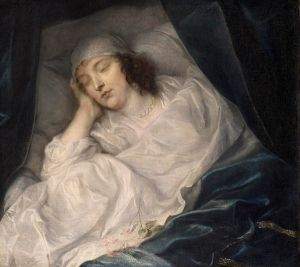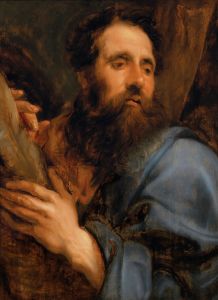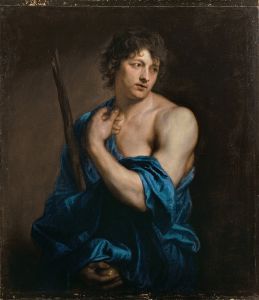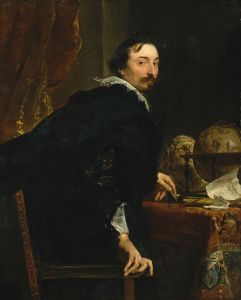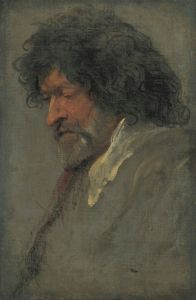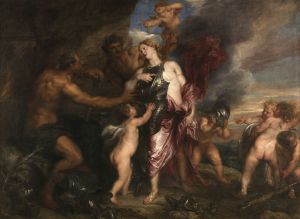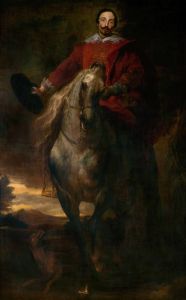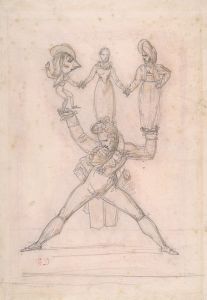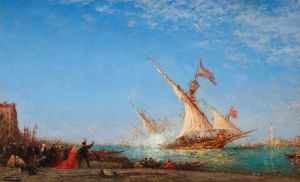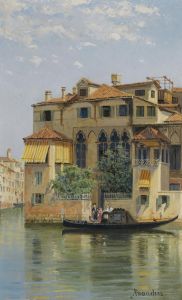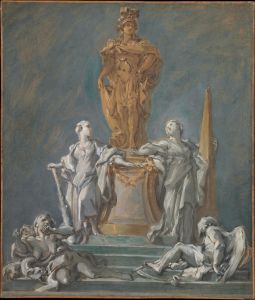
Cesare Alessandro Scaglia di Verrua, Abbé of Staffarda and Mandanici
A hand-painted replica of Anthony van Dyck’s masterpiece Cesare Alessandro Scaglia di Verrua, Abbé of Staffarda and Mandanici, meticulously crafted by professional artists to capture the true essence of the original. Each piece is created with museum-quality canvas and rare mineral pigments, carefully painted by experienced artists with delicate brushstrokes and rich, layered colors to perfectly recreate the texture of the original artwork. Unlike machine-printed reproductions, this hand-painted version brings the painting to life, infused with the artist’s emotions and skill in every stroke. Whether for personal collection or home decoration, it instantly elevates the artistic atmosphere of any space.
"Cesare Alessandro Scaglia di Verrua, Abbé of Staffarda and Mandanici" is a portrait painting by the renowned Flemish Baroque artist Anthony van Dyck. The painting is a striking example of van Dyck's portraiture, which is celebrated for its elegance, psychological depth, and sophisticated use of color and light.
Anthony van Dyck was born in Antwerp in 1599 and became one of the most prominent portrait painters of the 17th century. He was a student of Peter Paul Rubens, another master of the Baroque period. Van Dyck's work is characterized by its refined style and his ability to capture the personality and status of his sitters.
Cesare Alessandro Scaglia di Verrua was an Italian ecclesiastic and diplomat. He held the titles of Abbé of Staffarda and Mandanici, which indicate his high-ranking positions within the church. Scaglia was known for his political acumen and his involvement in various diplomatic missions during a period of significant political and religious upheaval in Europe.
The portrait of Scaglia by van Dyck is believed to have been painted around 1634-1635, during van Dyck's stay in Italy. In this period, van Dyck was highly sought after by the European aristocracy and clergy for his ability to portray his subjects with both grandeur and subtlety.
In the painting, Scaglia is depicted with a calm and composed demeanor, reflecting his status and intellect. He is dressed in the rich, dark robes typical of high-ranking ecclesiastics of the time, with a white collar that contrasts sharply with the darker tones of his attire. Van Dyck's use of light and shadow enhances the three-dimensionality of the figure, giving Scaglia a lifelike presence.
The background of the painting is relatively simple, which serves to focus attention on the sitter. Van Dyck's skillful brushwork is evident in the detailed rendering of Scaglia's facial features and the textures of his clothing. The subtle play of light on Scaglia's face and hands adds to the sense of realism and depth.
This portrait is a testament to van Dyck's ability to convey the character and status of his subjects through his art. It also reflects the cultural and political milieu of the time, where portraits of prominent figures were not only works of art but also symbols of power and influence.
Today, "Cesare Alessandro Scaglia di Verrua, Abbé of Staffarda and Mandanici" is held in high regard as an example of van Dyck's mature portrait style. It is part of the collection of the Museo del Prado in Madrid, Spain, where it continues to be admired by art historians and the public alike for its artistic excellence and historical significance.






